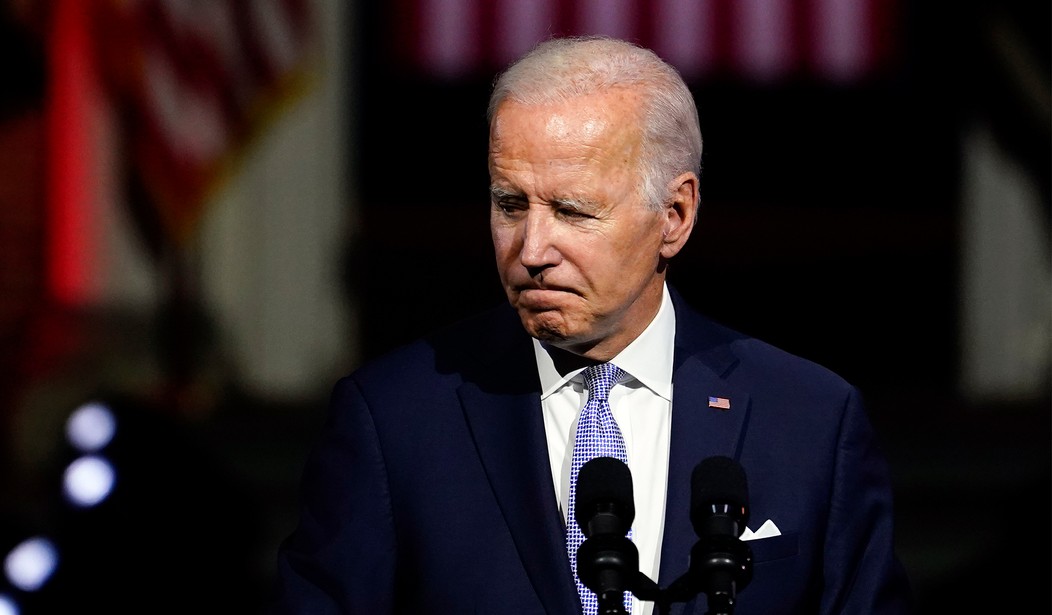So much for the temporary respite in producer-based inflation. After two successive monthly decreases, mainly an artifact of lower gas prices, the White House had tried to argue that inflation had come under control. In September, however, the producer price index (PPI) jumped by 0.4%, the highest monthly increase since June, when gas prices peaked:
The Producer Price Index for final demand increased 0.4 percent in September, seasonally adjusted, the U.S. Bureau of Labor Statistics reported today. Final demand prices declined 0.2 percent in August and 0.4 percent in July. (See table A.) On an unadjusted basis, the index for final demand advanced 8.5 percent for the 12 months ended in September.
In September, two-thirds of the increase in the index for final demand can be traced to a 0.4-percent rise in prices for final demand services. The index for final demand goods also advanced 0.4 percent.
Prices for final demand less foods, energy, and trade services advanced 0.4 percent in September, the largest rise since increasing 0.5 percent in May. For the 12 months ended in September, the index for final demand less foods, energy, and trade services moved up 5.6 percent.
The overall year-on-year PPI declined slightly from August’s 8.7% to 8.5% in September. It’s worth noting, of course, that the basis for these numbers are the previous year’s August and September, when inflation had already picked up steam. These measures compound on each other, which means that we’re seeing this level of inflation against an already-inflationary baseline. It’s still better than double digits, but these are still bad numbers, and it looks like they’re bending back in the wrong direction:

The main pressure point for final demand inflation on goods will come as no shock to anyone doing grocery shopping these days, or had to run air conditioning in a hot September, either:
Final demand goods: Prices for final demand goods moved up 0.4 percent in September after decreasing 1.1 percent in August. Sixty percent of the advance is attributable to a 1.2-percent increase in the index for final demand foods. Prices for final demand energy rose 0.7 percent. The index for final demand goods less foods and energy was unchanged.
Product detail: A major factor in the September increase in prices for final demand goods was a 15.7-percent advance in the index for fresh and dry vegetables. Prices for diesel fuel, residential natural gas, chicken eggs, home heating oil, and pork also moved higher. Conversely, the index for gasoline fell 2.0 percent. Prices for prepared poultry and for steel mill products also declined.
Final demand energy actually went up 0.7% thanks to government purchases. Imagine what will happen to PPI in the October report next month when gas prices climb over the next few weeks. Gas prices declined and then plateaued in September, and it still wasn’t enough to bend the inflationary curve downward or even hold it level to August.
Now imagine what the consumer price index report for September will look like when it comes out tomorrow.
CNBC reports this as a miss on expectations, by the way, a rather dry conclusion to a crisis for American households. They also note that the Fed’s signaling that their monetary policies have yet to take effect:
Wholesale prices rose more than expected in September despite Federal Reserve efforts to control inflation, according to a report Wednesday from the Bureau of Labor Statistics.
The producer price index, a measure of prices that U.S. businesses get for the goods and services they produce, increased 0.4% for the month, compared with the Dow Jones estimate for a 0.2% gain. On a 12-month basis, PPI rose 8.5%, which was a slight deceleration from the 8.7% in August. …
Wednesday’s data shows the Fed still has work to do. Indeed, Cleveland Fed President Loretta Mester on Tuesday said “there has been no progress on inflation.” Following the PPI release, traders priced in an 81.3% chance of a three-quarter point hike, the same as a day ago.
Stock market futures trimmed gains following the news, while Treasury yields were little changed on the session.
To say that no progress has been made on inflation is an understatement. Take a look at the month-on-month changes in food items in this report and get a fresh sense of the outrage that consumers feel over the current economic environment (final column):

Producer prices for fresh and dry vegetables went up 15.7% in a month. Grains went up 10.7%. Fresh eggs went up 16.7%. Those are insane increases, and had nothing to do with the price of gas either. It’s unsustainable, especially for working- and middle-class households whose buying power continues to erode during Joe Biden’s incompetent stewardship.
It’s politically unsustainable, too. The only way Democrats escape accountability for this economic debacle is to offer distractions from it, but with voters still making a few more trips to the grocery store between now and Election Day, those prospects have to be diminishing rapidly.







Join the conversation as a VIP Member